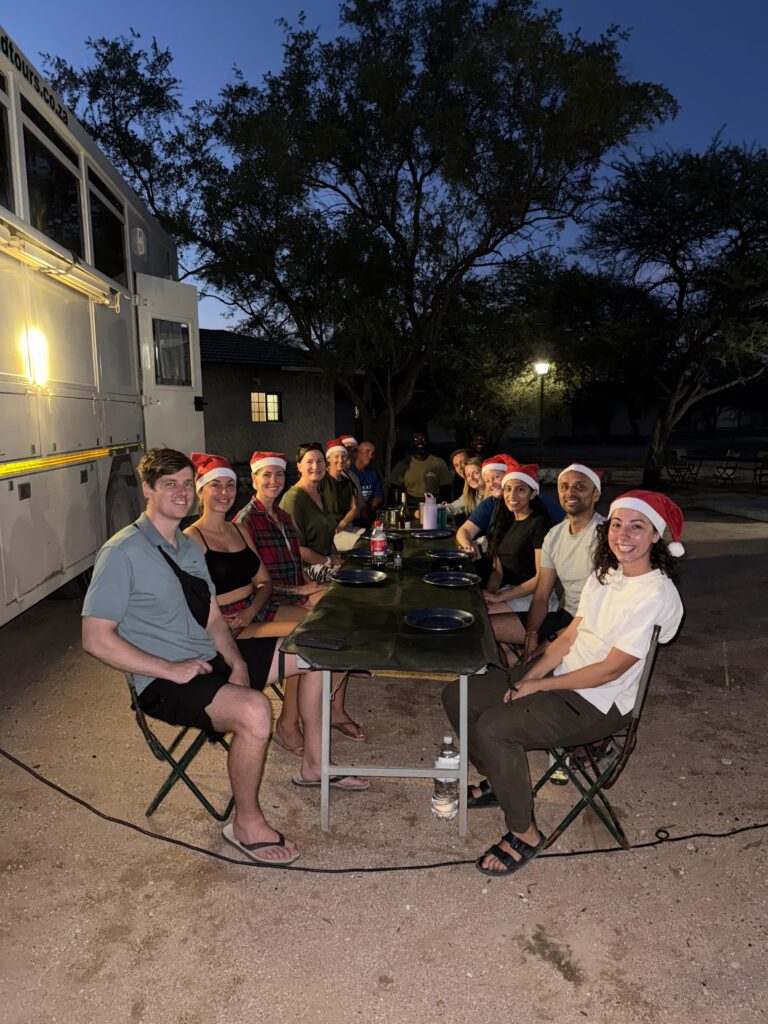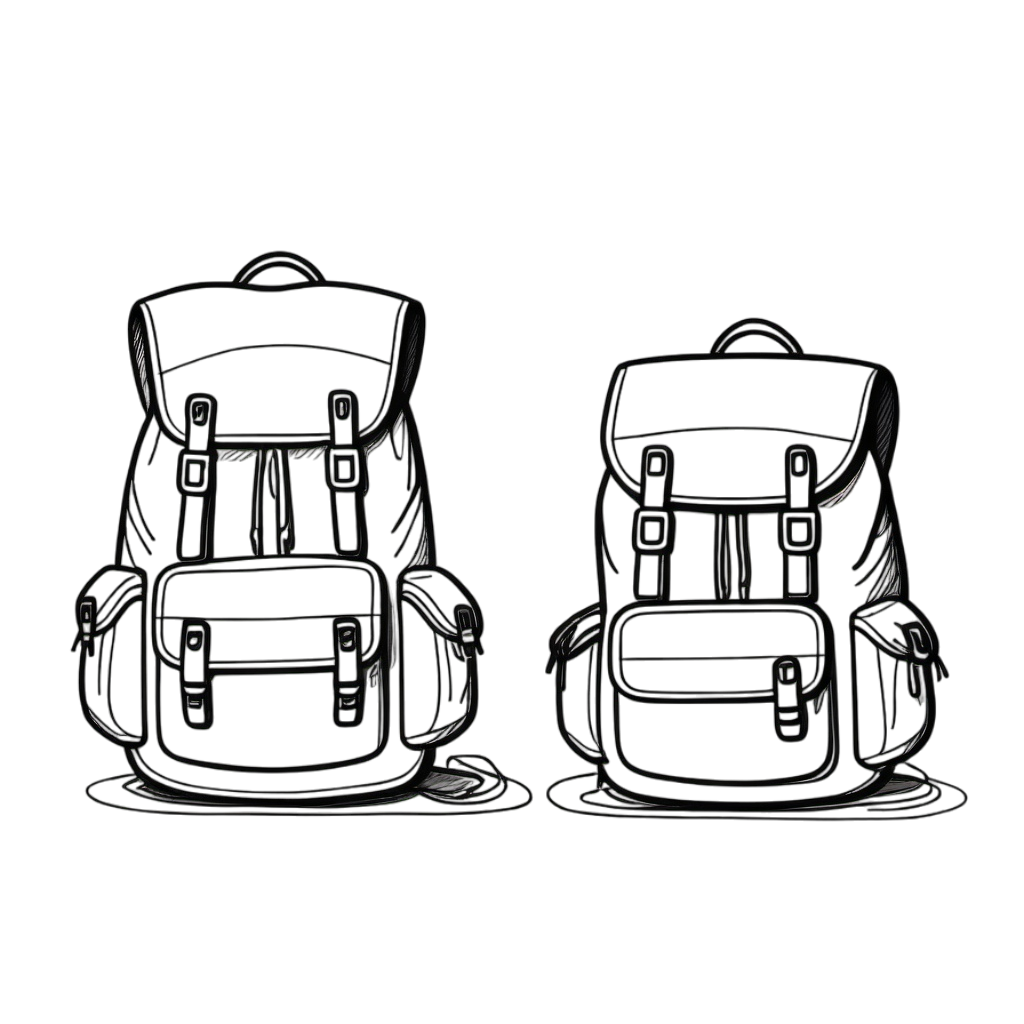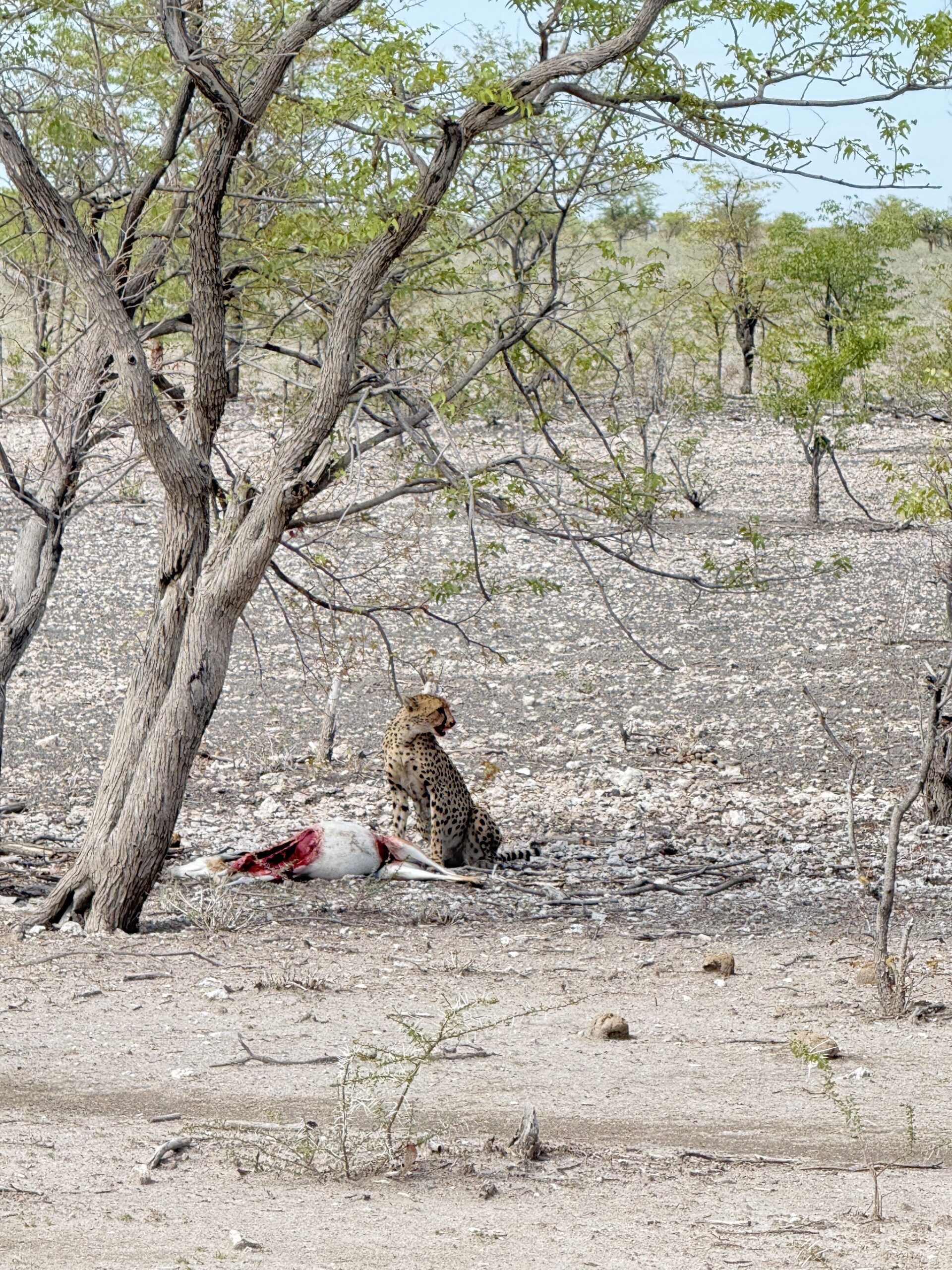Sunday, December 22nd – Wednesday, December 25th 2024
World Tour Days 50 – 53
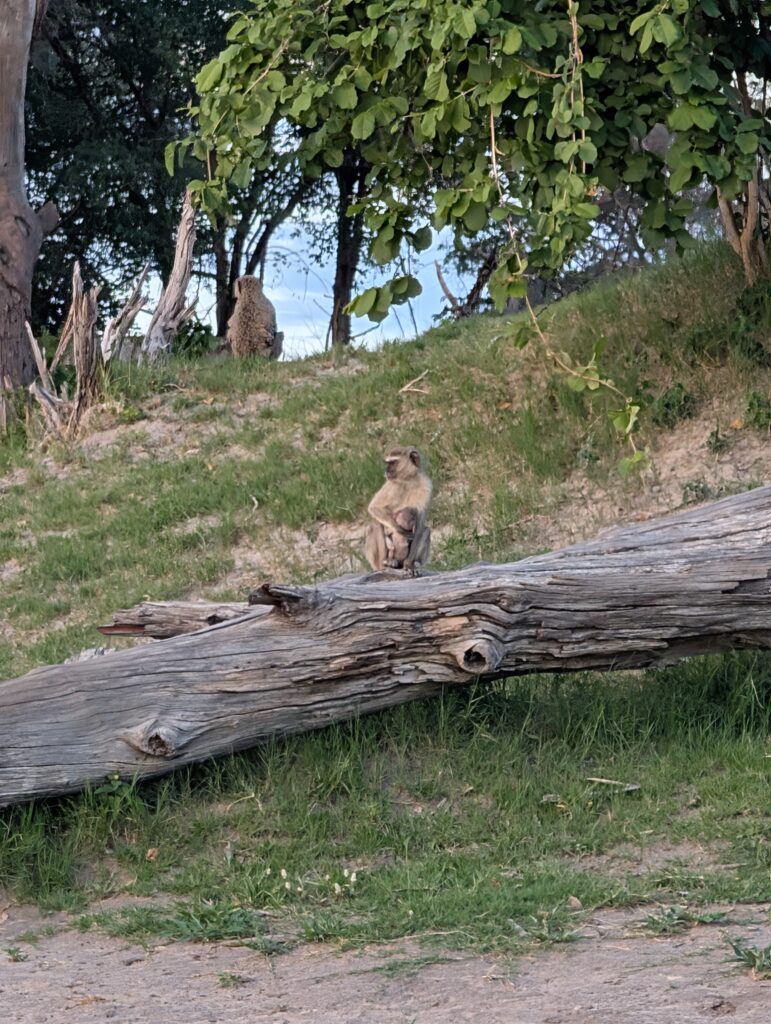
We left Maun, Botswana and crossed into our next country: Namibia. It was approximately 7 hours of driving to make it to Divindu, where we spent the night. That evening we did a river boat cruise where we saw hippos and many monkeys drinking from the river bank, including mothers with their babies on them. The following day was a 9 hour drive to get to the edge of Etosha National Park. We spent the night here before making our way to the park itself.
The drive to our campground in Etosha National Park was amazing for animal spotting. Due to the season most animals had not yet migrated to the park so we had our expectations set low and we were pleasantly surprised with what was so close to the road along the route. We saw a mother cheetah with her adolescent cub; they were a bit far from the truck but were neat to see regardless. Then there were a few red hart beasts, which is a cool type of antelope. There was a black rhino making its way through the bushes. Apparently Etosha National Park has the most black rhinos of any park in the world according to our guide.
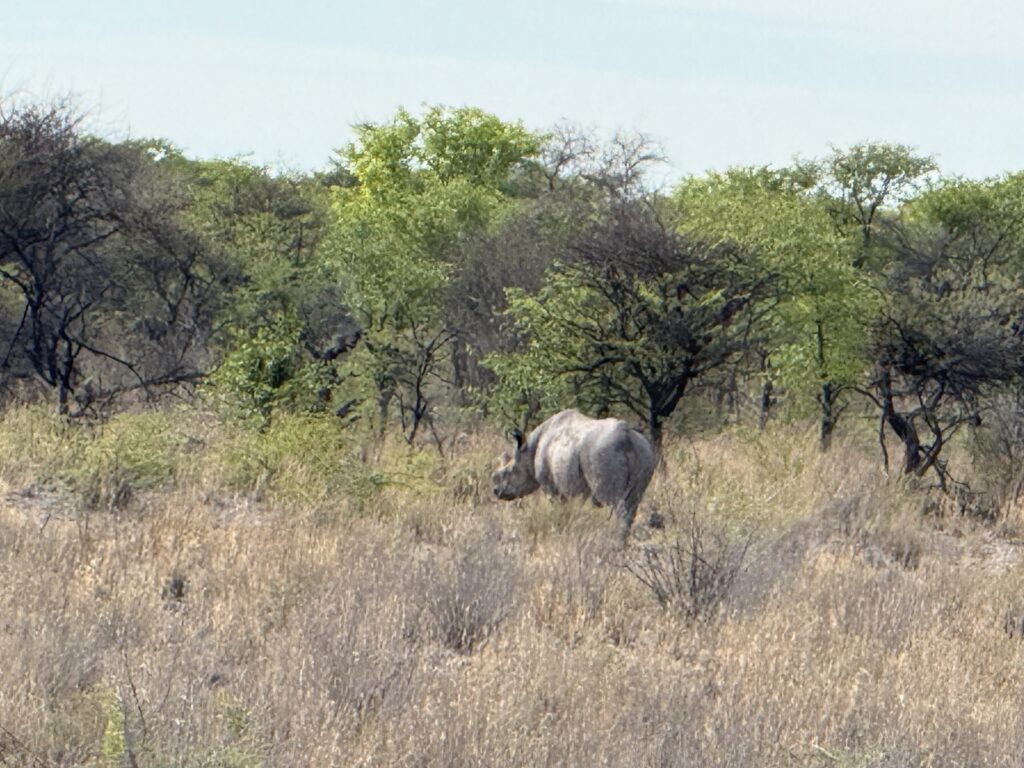
We learned that wildebeest have excellent hearing and zebras have phenomenal eye sight. This is why they tend to stick together. That way they can alert each other of predators more effectively. There were a few small groups of these animals on our drive. There was a millipede as thick as a loonie and longer than a hand at our toilet stop. The African bugs are on a whole other level of big and disgusting (in my opinion).
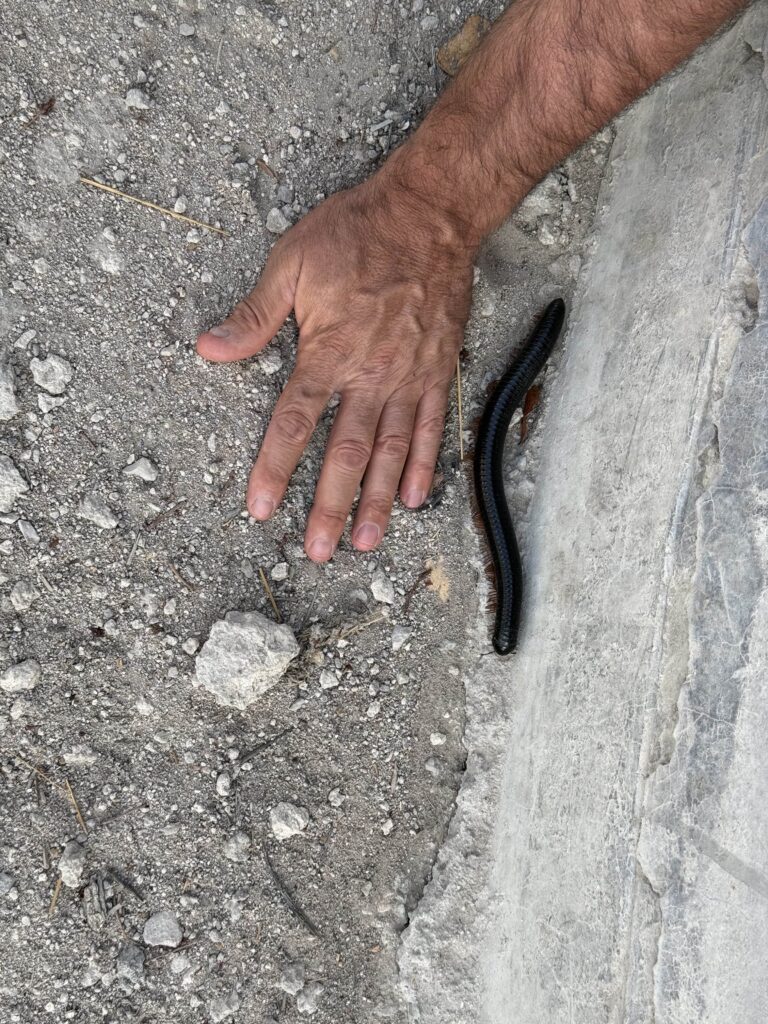
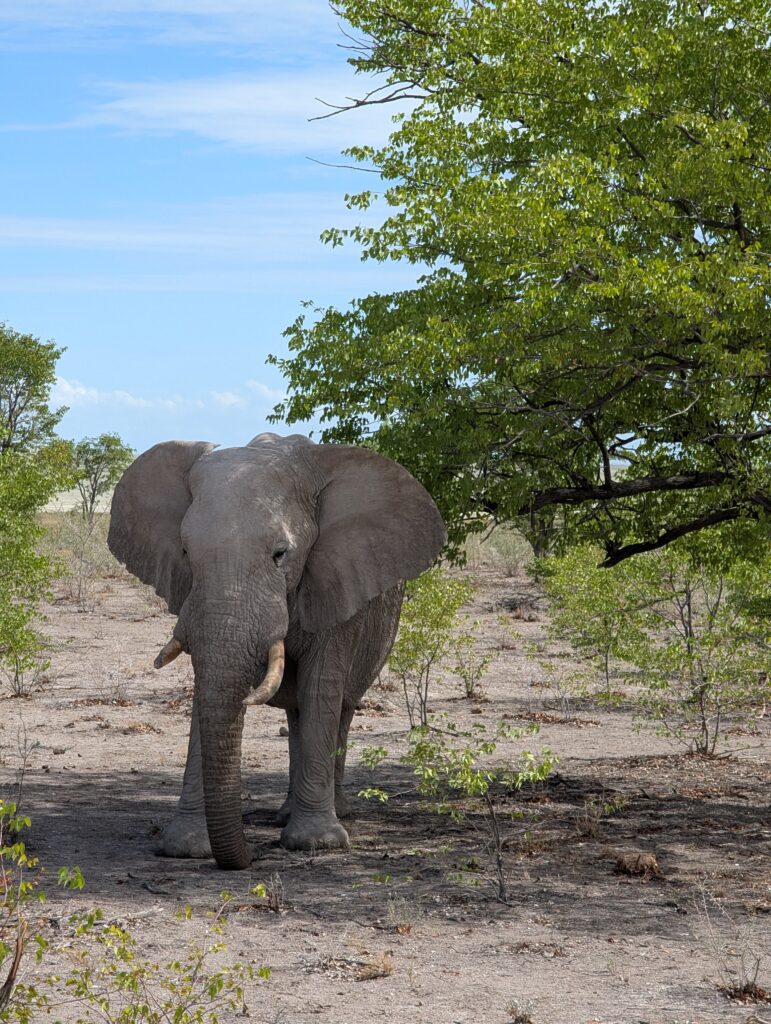
There was an old bull elephant, standing up but asleep. It was the first time we had seen that before. He was gently swaying back and forth, and his trunk was so long that the part of it that was on the ground was about 1 foot.
Off of the main road we took a detour as our driver got a tip from another truck that there was a cheetah nearby. After stopping we saw a cheetah eating a fresh kill less than 10 meters from our vehicle. We did not see the actual hunt but the kill was so fresh that it was mostly intact. Cheetahs need to be on high alert when they are eating as other larger predators can smell the kill and steal it from them. It was constantly looking around between bites. We were so close we could hear the crunching.
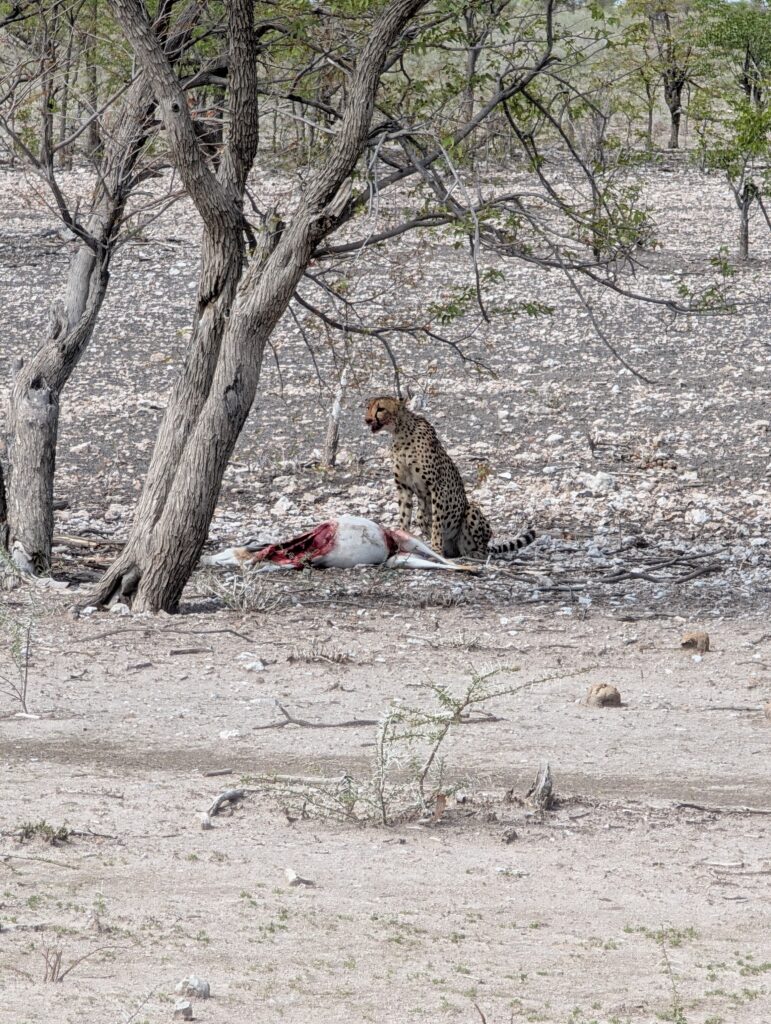
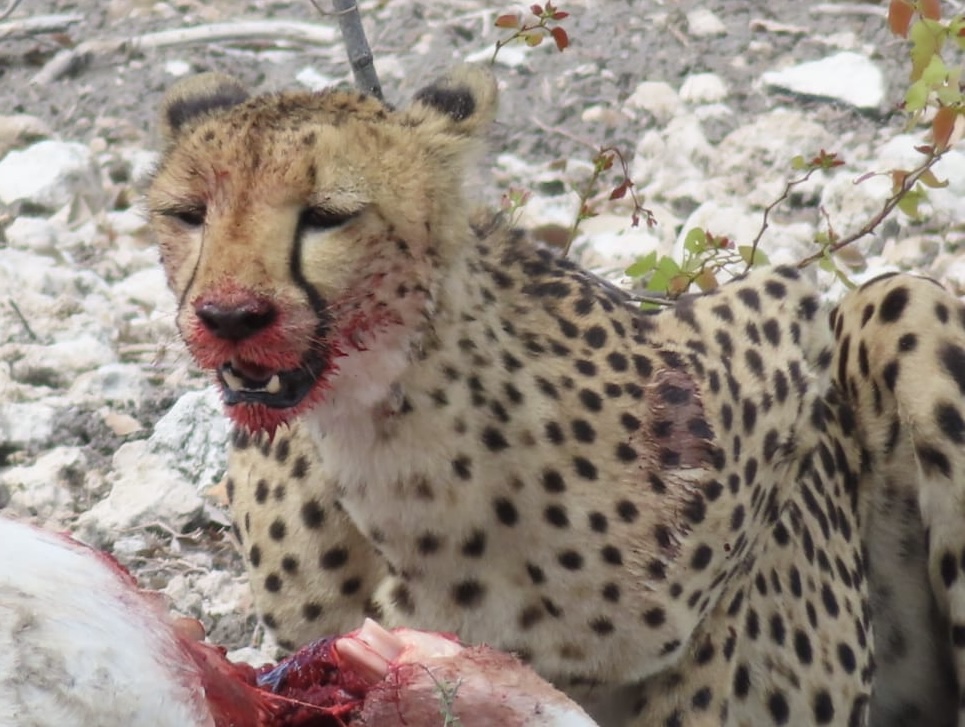
One of our other stops along the way was the place where we could step out of the vehicle and see the vastness or the salt plains. We took some photos here before continuing to camp.
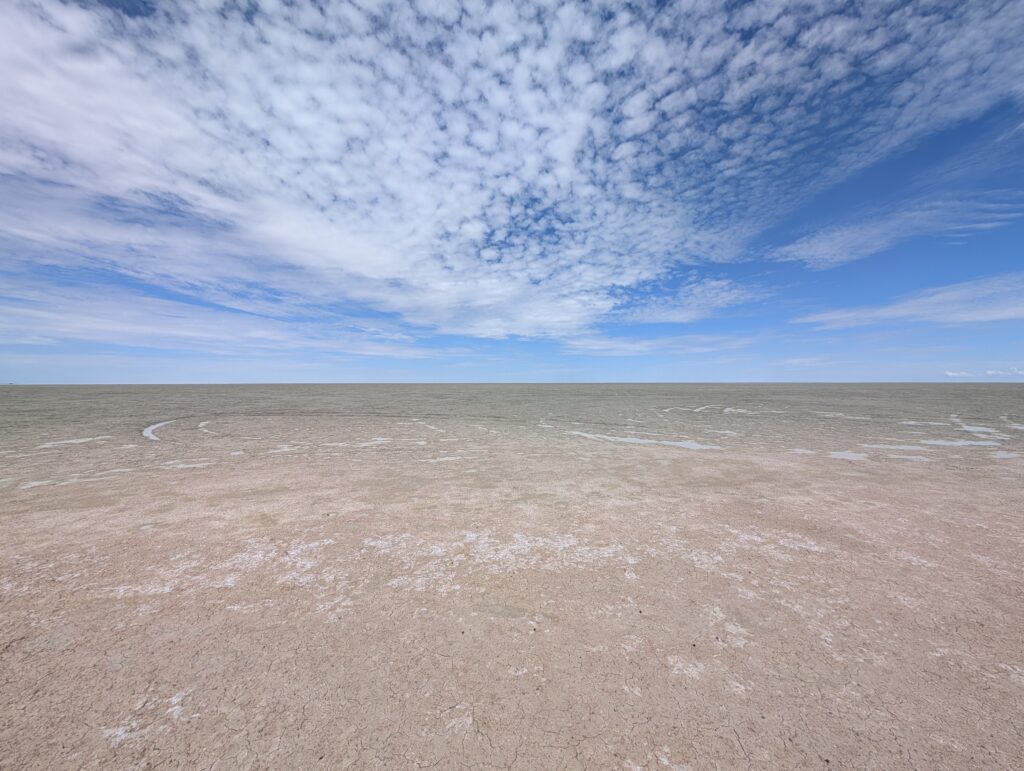
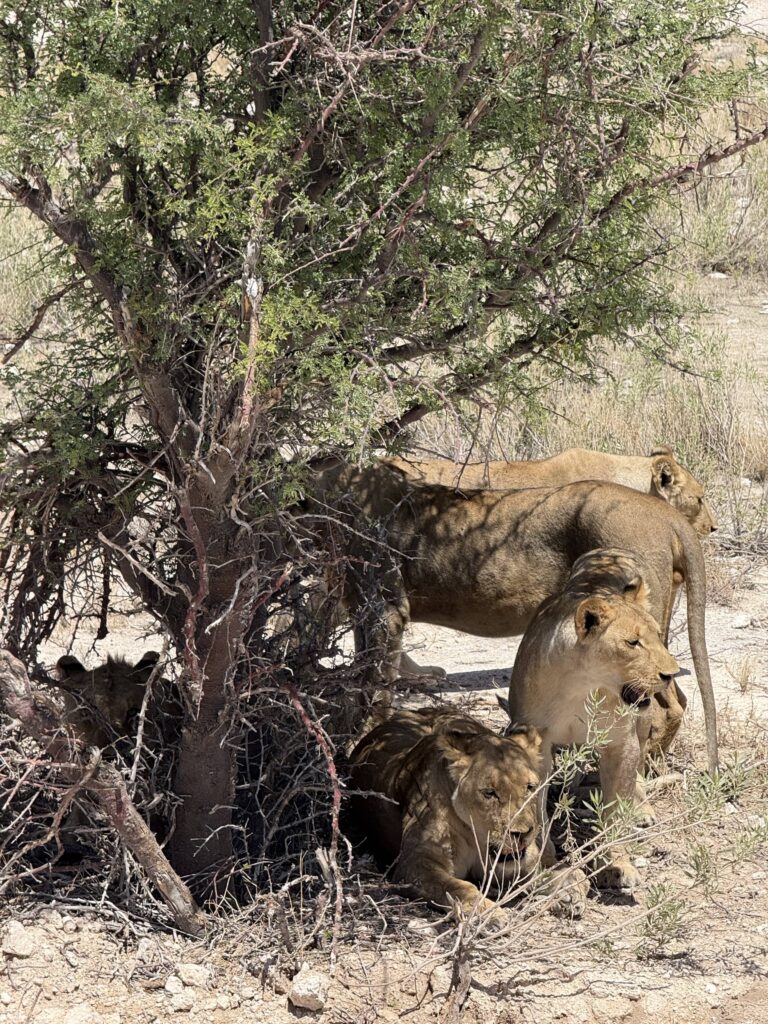
Just before arriving to our camp we were greeted by one more amazing sighting. At first there was one lioness walking along the road past our truck, but then we could see several more leaving the shade of the bushes and walking along the road. The guide said they were likely heading to more shaded areas as the day got hotter. In total we counted 10 lions, including some males. The pride was quite young with many adolescent and “toddler” aged lions. The young males were just starting to grow their manes and looked like they had mohawks. My favorite moment was watching all 10 lions try and squeeze under a small bush’s shade to cool down.
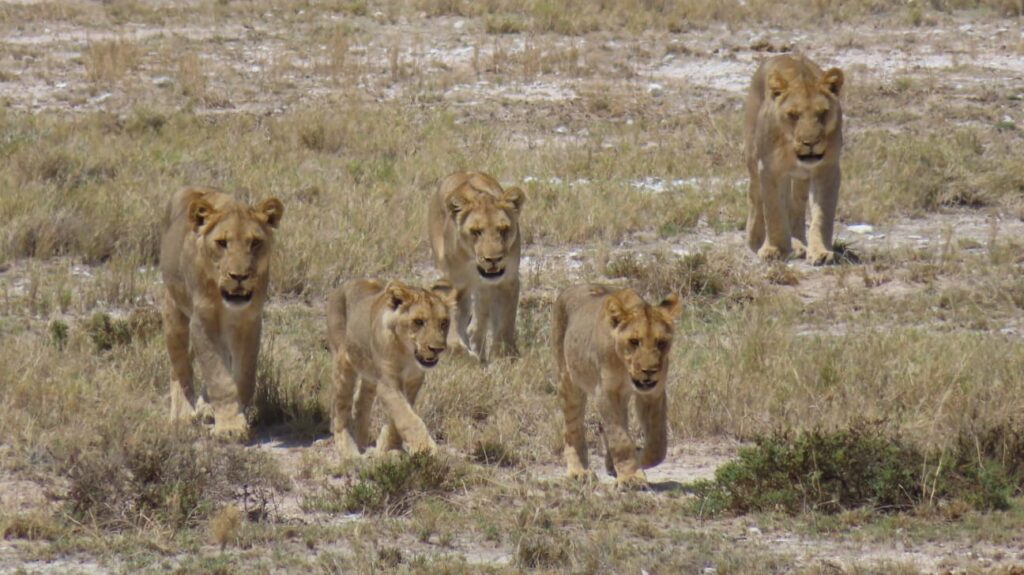
As we left the lions we saw many turtles swimming in the small puddles on the road. There were also a group of about 8 male ostriches alongside the road. Finally the last animal spotting was a mother and baby black rhino in the bushes. We learned that black rhinos have beak like mouths since they eat bushes and shrubs, and white rhinos have wide mouths as they eat grasses. Otherwise the two rhinos are the same color so can be hard to differentiate from far away.
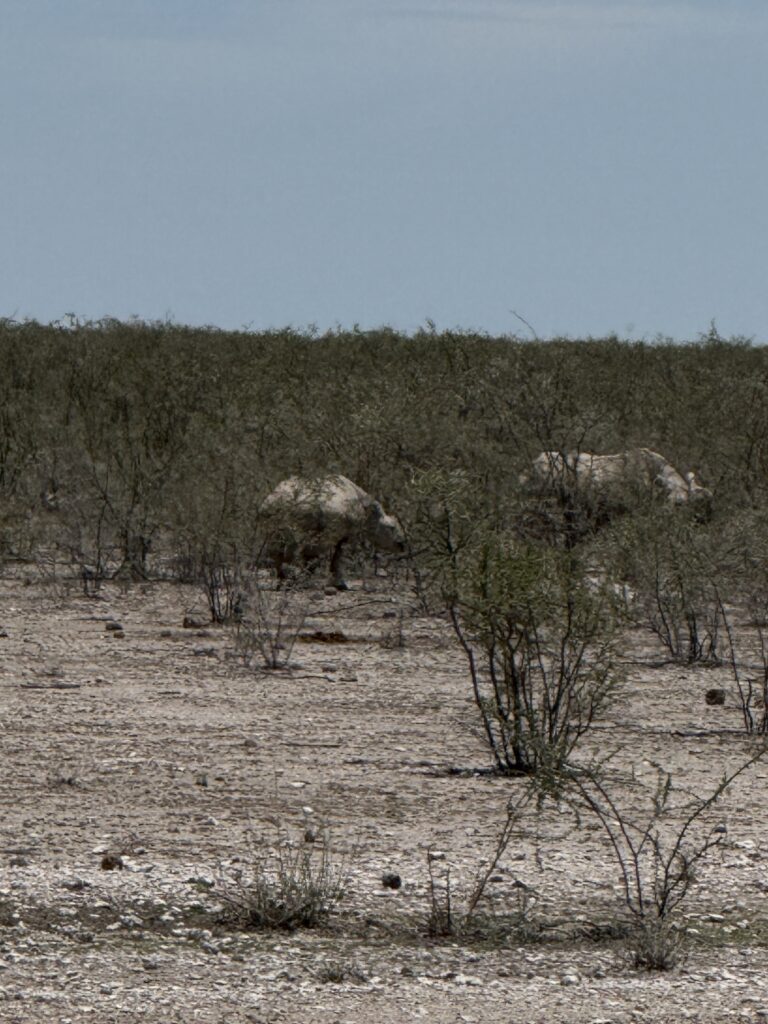
After an exciting morning of animal spotting we made it to our camp at 1pm. We enjoyed the large pool, played some games, and watched a spectacular sunset by the water hole. A rhino came by, but no other notable animals. There had been some short rains earlier that week so animals could get water from many places and did not need to come to large water holes anymore. Our dinner was at the campground restaurant for Christmas Eve. It was total chaos. That place was not prepared for the number of people. There were never any plates, bowls, or enough silverware. The buffet was always missing notable items and the dinner came with drinks but only white or red wine. This was unfortunate for the non-drinkers because there were no options for them, not even water. We thought this was odd as surely sodas are cheaper than wine, but after tasting that wine maybe it was cheaper than soda.
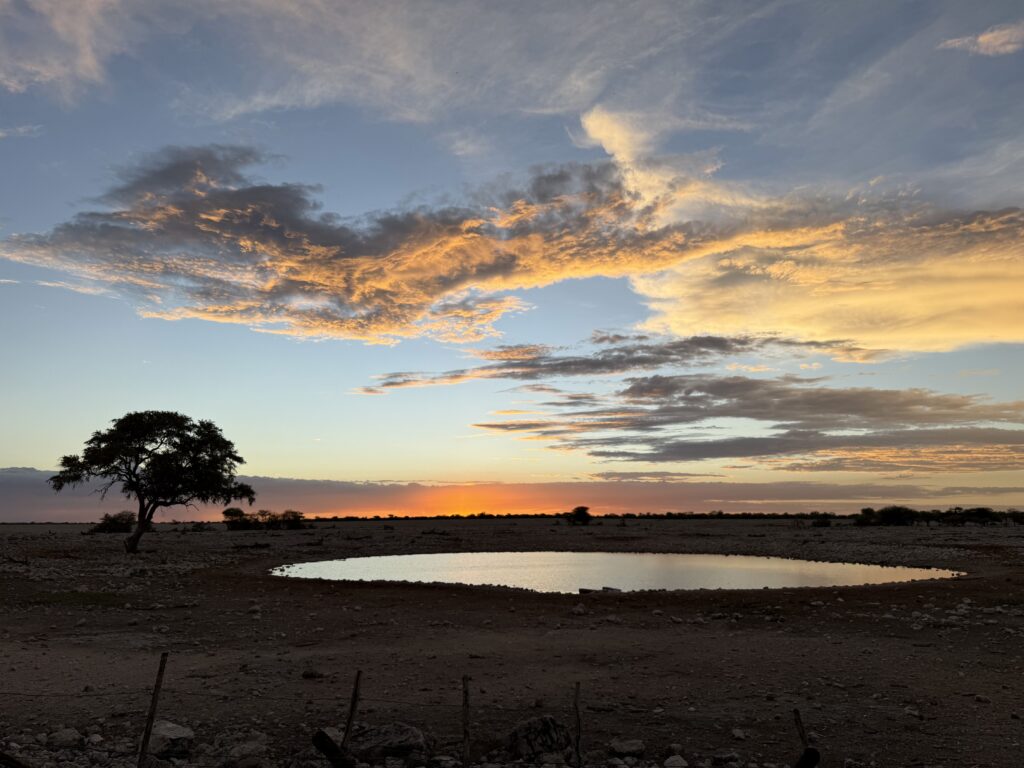
For Christmas we spent the morning on a game drive in our overland truck. There was a baby zebra about 1 week old, and lots of ostriches. The guide informed us that male ostriches are black because they sit on the nest at night time and females are brown because they sit on the nest in the day time, that way both genders have the best camouflage for nesting.
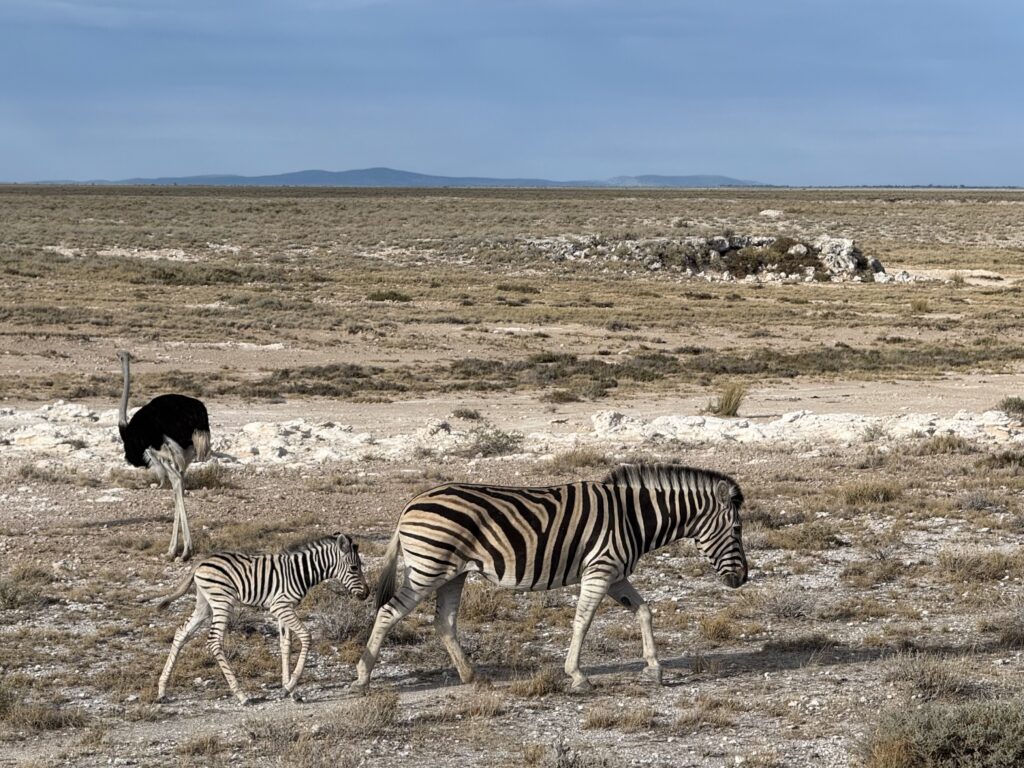
On the morning drive we saw a different mom and baby black rhino than yesterday. We only knew they were different because someone on our truck had photos from the day before and we compared them. Later in the morning there was a group of about 15 giraffes.
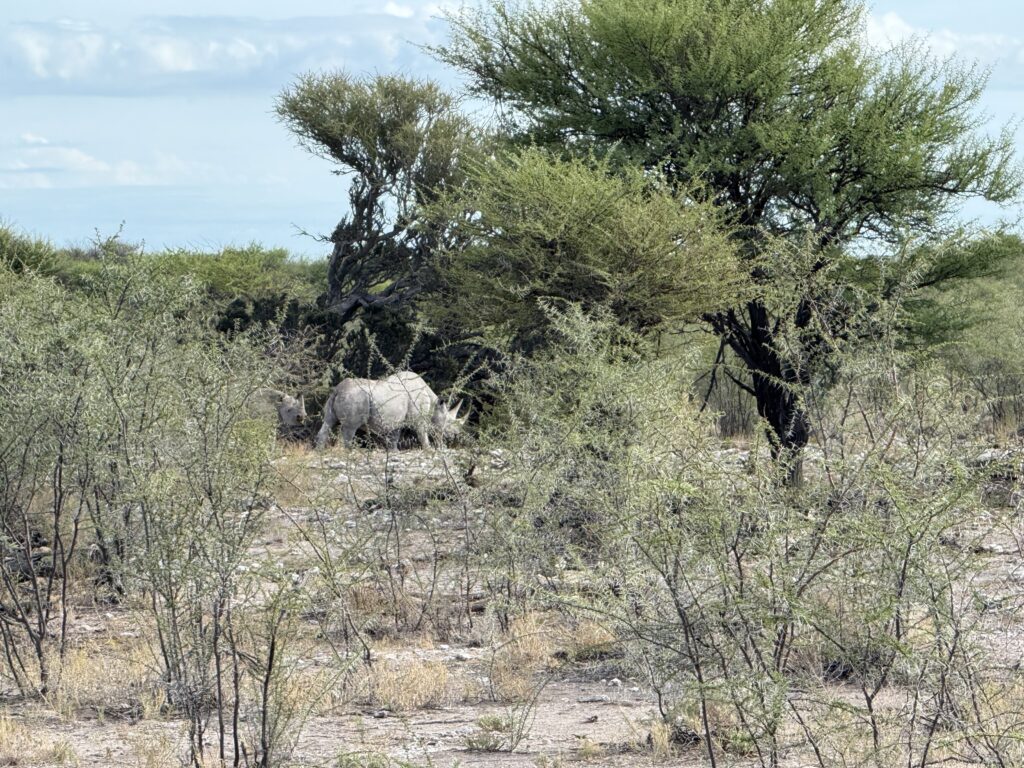
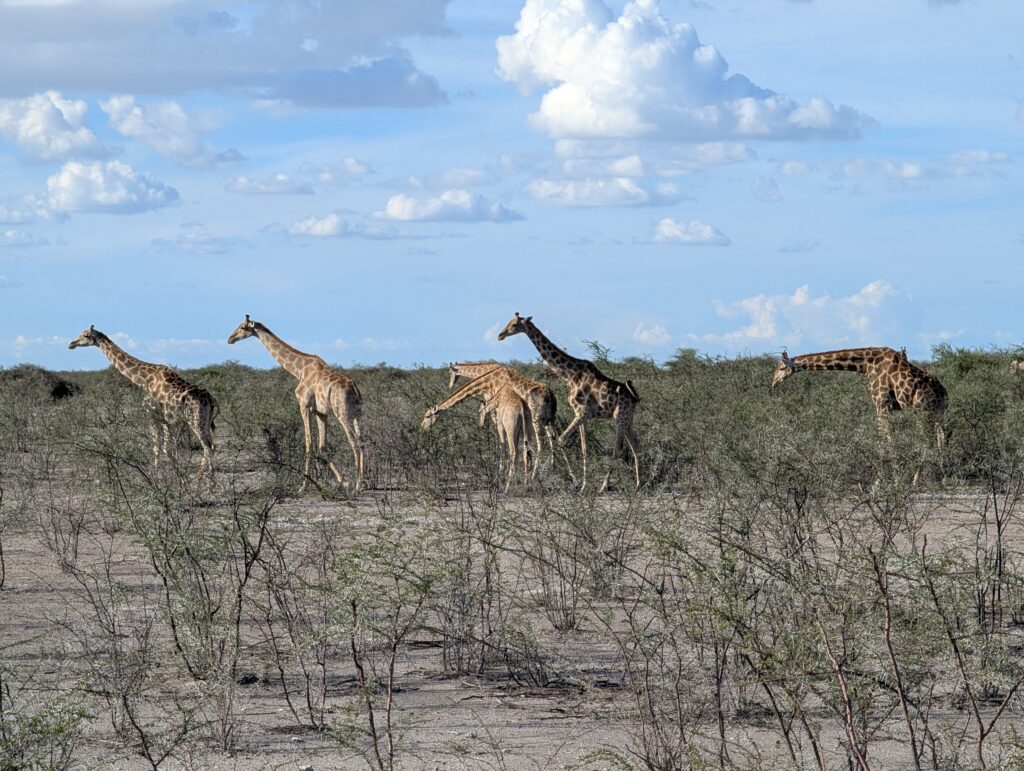
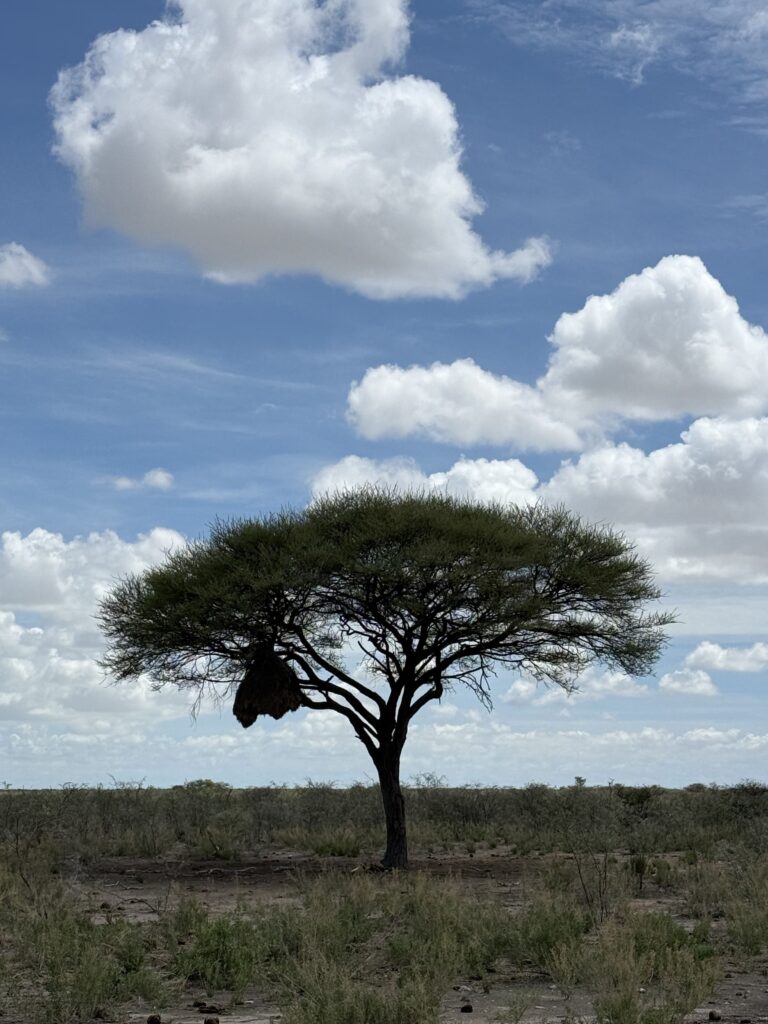
The morning game drive ended at 11:30am and just before getting back to camp we saw a huge sociable weaver nest. The nest was made of grass and took up two branches of a large tree. The entrances are at the bottom of the nest so that it is harder for snakes to come in. Up to 300 birds can live inside these nests, they can weigh up for 1 ton, and they never stop building it. Other bird species are also welcome inside the nest. The only time they need to build a new nest and move on is when the nest gets too heavy and breaks the branches it is built on.
The last afternoon was very relaxing and as a group we had a large Christmas dinner prepared by our guide. There were a crazy number of moths swarming everywhere so I ended up eating my meal alone on the truck instead of outside to avoid accidentally eating a moth. The rest of the group didn’t seem to mind them too much.
